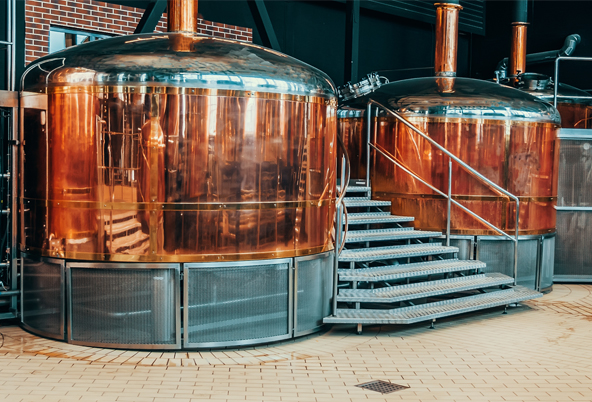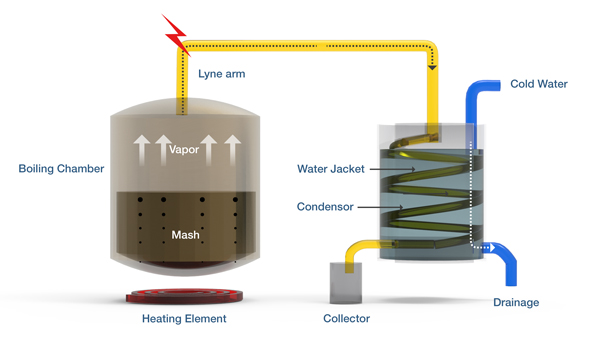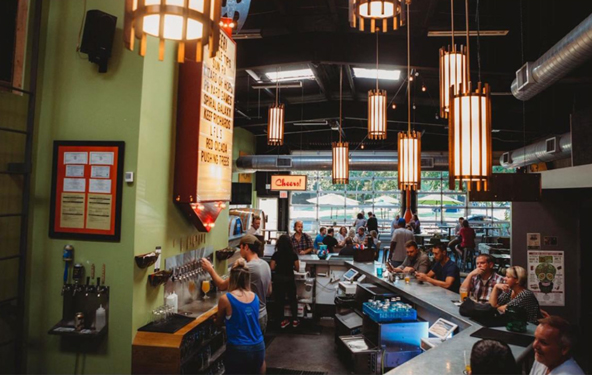
Breweries and distilleries have an environmental footprint as large as their vats. Their processes consume vast amounts of energy and water, contributing to global carbon emissions. With sustainability becoming a pressing concern, businesses within the industry are looking to minimize their impact.
Water conservation is a major focus, with many facilities implementing closed-loop systems and advanced recycling technologies to drastically cut water use. Waste isn’t wasted either – spent grain is transformed into biofuel or animal feed, showcasing clever waste management.
Businesses are also seeking ways to mitigate their energy use. Air-to-water (ATW) heat recovery presents a promising solution. ATW systems can capture excess process heat that can be used for heating water for various operational needs. By turning waste heat into a valuable resource, these facilities can trim down energy costs while reducing their impact on the environment.
In this industry, science and creativity come together to create brews and spirits. Brewmasters and distillers are passionate about perfecting the balance of flavors and aromas to produce exceptional beverages for consumers.
The brewing and distilling industry has seen significant growth over the past decade, driven by increasing consumer demand for craft beverages and premium spirits. The U.S. is now home to over 9,000 breweries and more than 2,000 distilleries. In 2022, the U.S. craft brewing industry alone contributed $72.2 billion to the economy and provided nearly 460,000 jobs. This growth is fueled by innovation – as new brewing techniques and distillation methods are constantly being developed.

Both brewing and distilling involve several stages where heat is either applied or removed, creating a dynamic thermal environment. The primary processes that generate significant heat include boiling, distillation, and fermentation. Unless this heat is captured, it is lost to the environment, leading to higher fuel costs due to the increased need for energy to maintain process temperatures. Fuel costs can make up a considerable portion of operational expenses, with U.S. breweries spending over $200 million annually on energy. Of this, approximately 35% of a brewery's electricity costs can be attributed to refrigeration alone. Implementing efficient air-to-water heat systems allows for the capture and reuse of this energy, transforming a lost resource into a valuable asset. Beyond cost savings, these systems offer several additional benefits:
Brewers and distillers are hotbeds of heat generation. Here are the four main processes that churn out substantial waste heat:
In brewing, boiling involves heating the wort (a mixture of water, malt, and hops) to temperatures typically ranging from 212°F (100°C) to 216°F (102°C). This step serves several purposes:
Distillation involves heating the fermented wash (a mixture of water, yeast, and fermentable sugars) to separate alcohol from water and other components. This process typically starts at the boiling point of ethanol, 173°F (78°C), and can go up to around 212°F (100°C), the boiling point of water.
This process is highly energy-intensive and can be costly. For example, distillation accounts for 57% of the energy used in the production of cognac. The larged amount of heat generated, especially from the cooling of the condenser and the exhaust from the boiler, presents a great opportunity to recoup some of these energy costs with ATW heat recovery.

During fermentation, the metabolic activities of yeast generate heat. This process can cause fermentation tanks to reach temperatures that necessitate cooling to maintain suitable conditions for yeast activity. The excess heat removed by the cooling jackets or coils on fermentation tanks can be captured and repurposed.
Breweries and distilleries rely heavily on cooling and refrigeration systems to maintain the quality and stability of their products:
The walk-in coolers expel large amounts of waste heat into the surrounding air, which can be captured by air-to-water heat recovery units.

Excess heat doesn't have to go to waste. It is still a valuable energy source that can be harnessed within the facility. Here are some specific applications where recovered heat can be utilized:
Hot water is a fundamental requirement in brewing and distilling for mashing, cleaning, and sterilization. Recovered heat can preheat incoming cold water, reducing the energy required to reach the desired temperature. This can significantly cut down on fuel consumption in boilers.
In colder climates, the recovered heat can be used for space heating, maintaining comfortable working conditions without relying heavily on additional heating systems. This application is particularly beneficial for large facilities with expansive production areas. Recovered heat can also be used to warm public spaces such as taprooms and tasting areas – contributing to a comfortable visitor experience.

During the initial stages of brewing and distilling, recovered heat can be directed towards wort or mash heating. By supplementing primary heating systems with recovered heat, energy efficiency is improved, the load on primary heating systems is reduced, and reliance on fuel is decreased.
Clean-in-place (CIP) systems maintain hygiene and prevent contamination in brewing and distilling operations. These systems clean and sterilize various equipment, including tanks, pipes, filters, and other components that come into contact with the product. Using recovered heat for CIP processes conserves energy and reduces operational costs by maximizing resource efficiency.
Air-to-water waste heat recovery not only benefits your bottom line but also demonstrates a commitment to sustainability, making it a win-win for both your business and the environment. Imagine the positive impact on your operational costs and your reputation as a forward-thinking, eco-conscious company. Consider ENERVEX’s RHX Roof-Top Heat Exchanger System for your waste heat recovery needs. The RHX system offers near-continuous operations, with installation taking less than 30 minutes in most cases. It delivers real, measurable savings while slashing your CO2 emissions.